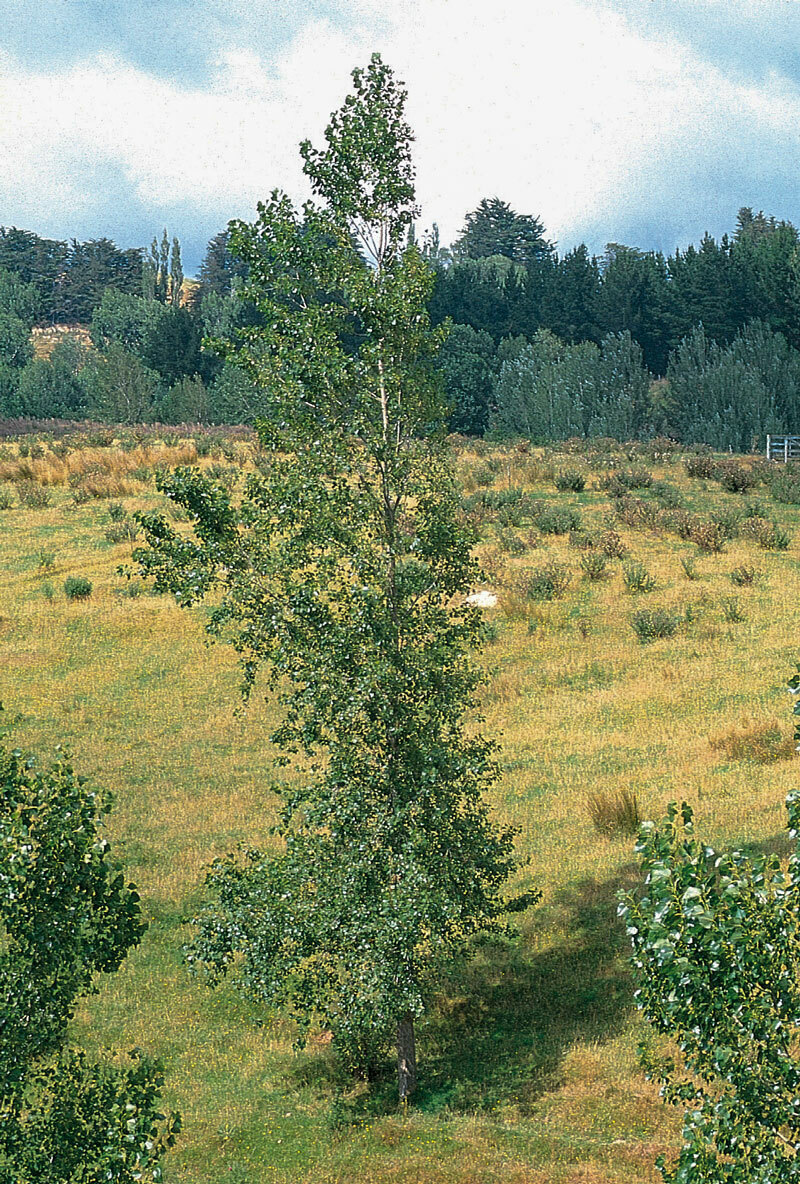
Key to Poplars and Willows
in New Zealand
Version 1.0.5
'Selwyn'
- 0. Poplar or Willow?
- Looks like a poplar -> Poplar - 1. Crown shape
- Narrow crown (or uncertain) -> 2. Bark
- Bark is rough -> 4. Bark and form
- Bark coarsely ribbed, ribs not parallel. Apical dominance, often with a heavy asymmetrical branch(es), leaves with green upper surface, light green lower surface, leaves hang down from stem -> 6. P. x euramericana hybrids
- Very narrow form, light branching, narrow trunk, rust prone, slower growing than other <i>P. x euramericana hybrids</i> -> 'Selwyn'
Populus deltoides x P. nigra NZ 5016
‘Selwyn’ is a P. x euramericana hybrid, resulting from a 1980 NZ cross between P. deltoides and Populus nigra ‘Italica’. It was first released commercially in 1995.
Identification
‘Selwyn’ leaves are roughly heart-shaped, similar to ‘Veronese’, with a straight base and a slightly undulating leaf margin. The leaves are dark green above and light green below.
‘Selwyn’ is a female tree with a very narrow form, light branching, and sometimes a wavy stem growth due to wind.
Typical uses, site requirements, pest and disease resistance
‘Selwyn’ is suitable for general soil conservation use. It has excellent drought resistance and is typically used on slopes, in similar zones to ‘Argyle’ and ‘Crowsnest’. It can be brittle.
‘Selwyn’ has less rust resistance than the other P. x euramericana hybrids. ‘Selwyn’ is possum palatable.
Performance in trials
Growth rates of ‘Selwyn’ are generally slightly lower than the P. x euramericana hybrids ‘Weraiti’ and ‘Otahuao’, but are comparable to ‘Fraser’ and ‘Dudley’. In a Wairarapa trial (ann. rainfall 850 mm), ‘Selwyn’ at age 12 had an average diameter (dbh) of 28 cm (c.f. ‘Weraiti’ 36 cm, ‘Kawa’ 27 cm), and an average height of 16 m (c.f. ‘Weraiti’ 17.9 m, ‘Kawa’ 15.4 m). At the same age in Manawatu (ann. rainfall 1200 mm) and at age 13 in Otago (ann. rainfall 600 mm), ‘Selwyn’ dbh averaged 25 cm and 19 cm respectively.
Whilst ‘Selwyn’ has slower height growth than the P. x euramericana hybrids ‘Weraiti’, and ‘Dudley’ in recent trials (Otago, Canterbury, Manawatu, Hawkes Bay, Te Kuiti and Auckland), it has the best survival rate, with deaths only numbering 4% of poles planted.



